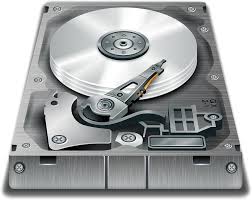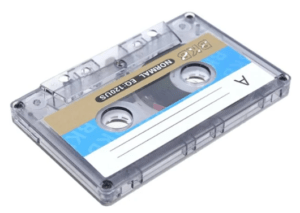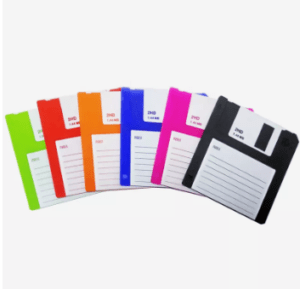Introduction
Magnetic Storage Devices
These are the oldest of the commonly used storage devices, but are still the most widely used.
- Magnetic Hard Drives are used to store data and programs on desktops and laptops
- Magnetic tape drives are usually used for large server / systems backups.
Magnetic tape drives store disk on ferro-magnetic media such as a hard platter or flexible cassette tape.
How they work
How magnetic storage devices work
Pros & Cons
Advantages
- Cheap Storage per MB (especially tape drives!)
- Relatively quick read / write speeds.
Disadvantages
- Easily broken if dropped
- Slow read /write compared to new SSD drives.
- High energy uses as it uses moving parts (lower battery life on laptops)
HDD
Hard Disk Drive
 Hard disk contain multiple hard disks stacked on top of each other. Each disk is covered in a layer of ferro-magnetic material that can be polarised by the electro-magnet on the read-write head.
Hard disk contain multiple hard disks stacked on top of each other. Each disk is covered in a layer of ferro-magnetic material that can be polarised by the electro-magnet on the read-write head.
HDD drives are one of the older forms of non-volatile storage in use today and are still the most common form of storage for desktop pcs.
The are very robust, economical and have a high storage capacity(up to 16TB). However their read-write speed is slower than SSD drives, due to the mechanical nature of the drive. Also they are prone to data fragmentation which slows them down even further over time.
Tapes
Magnetic Tape Drives

Magnetic tape drives work using a cassette that contains ferro-magnetic tape. They were incredibly popular during the 1980s and 1990s as they allowed a large of amount data to be stored on them (for the time). They have a very slow read-write speed and data can only be read sequentially so over time they were replaced by CDs.
Floppy Disks
Floppy Disk Drives

Floppy disks contain a single flexible plastic platter onto which data is written. They had a slow read-write speed and very limited capacity (1.44MB) and so were replaced by CDs and Pendrives.
They still live on in the hearts of IT professionals and are still the default save icon on most applications 🙂
Cards
Magnetic Cards
Magnetic cards were first developed for credit cards and debit cards. Due to security issues (they are very easy to clone) most credit cards now rely on much more secure chip & pins technology. Magnetic cards are still widely used in the hospitality industry for room keys.